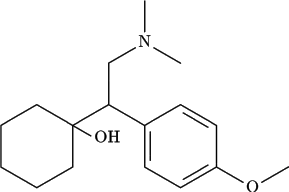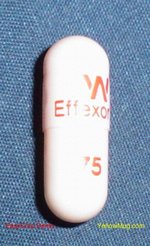For several reasons, women may experience significant, even disabling, hot flushes following treatment for breast cancer. In addition to the induction of early menopause, treatment may involve therapy with tamoxifen, which has the specific side effect of inducing or exacerbating hot flushes. Most breast cancer survivors who are having hot flushes are not offered estrogen therapy to alleviate them because of concerns about potentiating recurrence of the breast cancer. Of the many agents investigated as potential alternatives to estrogen, the best evidence exists for progestins, but many patients and physicians are uncomfortable with any hormonal manipulation following breast cancer. Anecdotal evidence and the results of a small pilot trial indicate that the antidepressant venlafaxine relieves hot flushes. Loprinzi and colleagues studied the effect of venlafaxine on hot flushes in breast cancer survivors.
More than 200 women with troublesome hot flushes occurring more than 14 times per week and either a history of breast cancer or unwillingness to take hormonal therapy were recruited. Patients had to have a life expectancy of at least six months. Anti-estrogen therapies such as tamoxifen were allowed, but other therapies were excluded. After stratification for age, use of tamoxifen and symptom severity, the patients were randomly assigned to placebo or one of three treatment groups. The treatment groups included 37.5 mg, 75 mg or 150 mg dosages of venlafaxine daily. The two higher doses used weekly increments to achieve the full dosage level. The patients and study personnel were blinded as to treatment allocation. Patients completed daily diaries about symptoms, weekly questionnaires about quality of life and a Beck depression inventory. Each week, patients were contacted by a study nurse to measure blood pressure, encourage compliance and monitor symptoms, including potential side effects.
The four groups were similar across all variables, including age, tamoxifen use, duration of hot flushes and baseline depression scores. After four weeks, the median decrease in hot-flush scores was significantly greater in all three of the active treatment groups than in the placebo group. The median score reduction in the placebo group was 27 percent. The reduction in the venlafaxine-treated patients was 37 percent for the lowest dose and 61 percent for the two higher doses. Twenty percent of placebo patients reported a reduction of more than 50 percent in hot flushes compared with 45, 63 and 55 percent, respectively, for the three dosages of venlafaxine. In the placebo group, overall quality-of-life assessments decreased by three points in the placebo group but increased by three points in the venlafaxine group. Depression scores improved by an average of 1.6 points in the placebo group and by 2.4, 4.8 and 3.2 points, respectively, in the venlafaxine treatment groups. No significant differences were apparent for most side effects, but gastrointestinal symptoms were more common with the higher doses of venlafaxine.
The authors conclude that venlafaxine provides an effective treatment for hot flushes in women who are unwilling or unable to take estrogen. Balancing efficacy against side effects, they recommend 75 mg as the most appropriate dosage.
ANNE D. WALLING, M.D.
Loprinzi CL, et al. Venlafaxine in management of hot flashes in survivors of breast cancer: a randomised controlled trial. Lancet December 16, 2000;356:2059-63.
COPYRIGHT 2001 American Academy of Family Physicians
COPYRIGHT 2001 Gale Group




